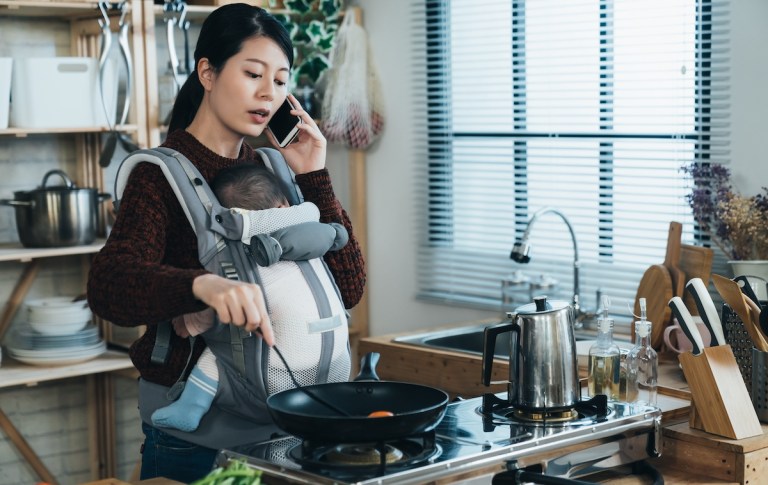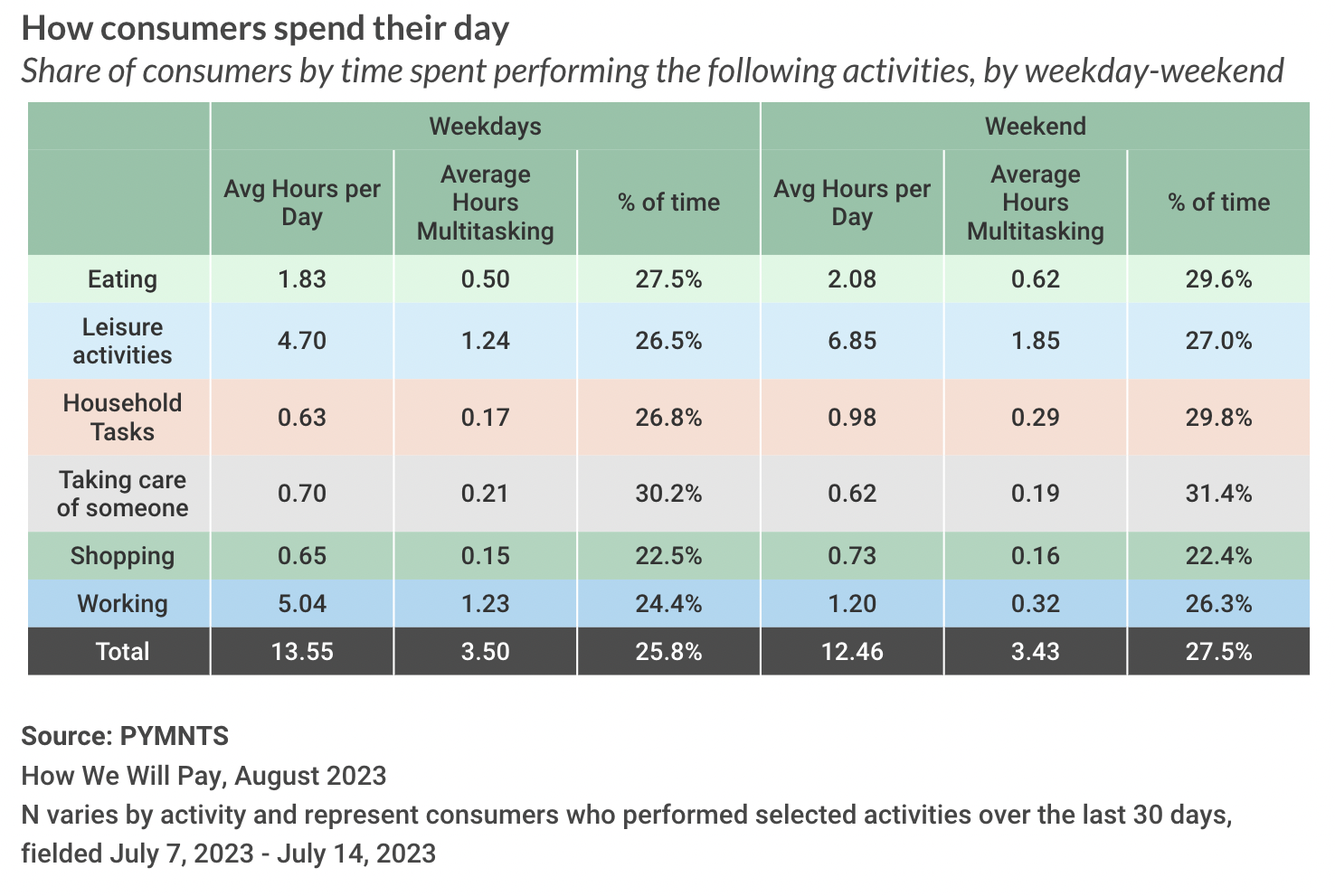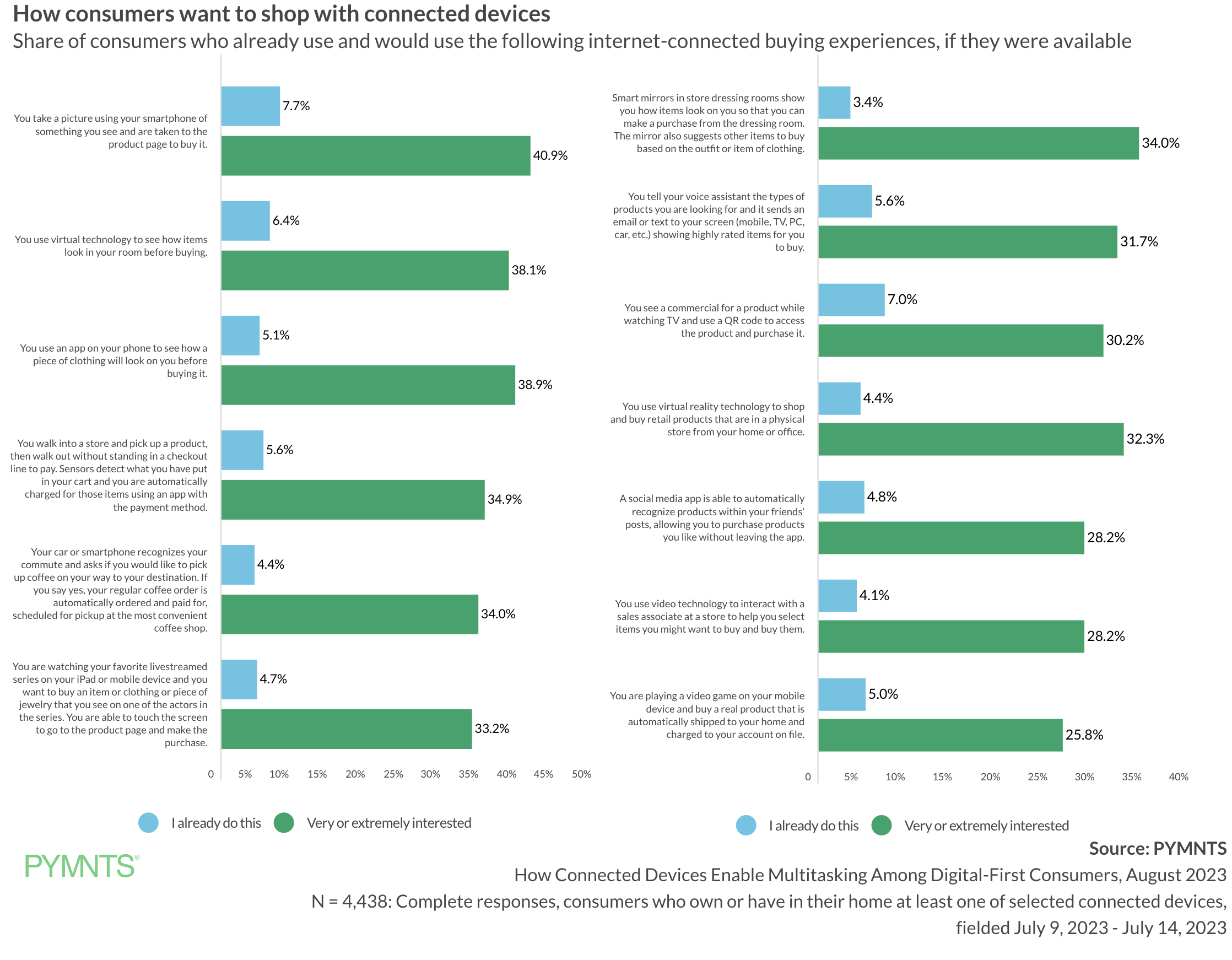How Generation Multitasker Will Drive Digital Transformation in 2024

With the rise of connected devices making it possible to do more at any given moment, 2023 saw consumers multitasking more than ever.

A PYMNTS Intelligence survey of more than 4,600 U.S. consumers revealed that people spend 26% of their time, on average, multitasking during the work week and 28% of their time doing so on weekends. The most common daily activity that consumers multitask while doing is taking care of others, followed by eating and household tasks.
For instance, 55% of those who multitask while taking care of others do so to do their shopping, and 44% of those who multitask while doing household chores do so for leisure or entertainment.
“A new generation of more technologically advanced connected devices and emerging technologies like generative [artificial intelligence (AI)] will make this connected multitasking an embedded part of the consumer’s daily routine: more integrated, easier, smarter and more personalized,” PYMNTS’ Karen Webster observed.
Consumers are engaging more digitally, adding more connected-device-powered activities to their daily routines, according to PYMNTS Intelligence’s “How the World Does Digital” report, which was based on input from more than 17,500 consumers across 11 countries.
Many consumers are open to more connected-device-powered multitasking experiences, according to the August installment of PYMNTS Intelligence’s How We Will Pay Report, “How Connected Devices Enable Multitasking Among Digital-First Consumers.”

For instance, 1 in 3 consumers reported that they would be interested in shopping while they stream content with in-video-player access to product pages, while only 5% have already used such capabilities. Plus, 28% would be interested in shopping while they browse social media, if the platforms were able to automatically recognize products within friends’ posts, allowing the shopper to buy products they like without leaving the app.
It is not only smart phones and traditional computers enabling this rise in multitasking. The proliferation of voice-enabled smart devices throughout consumers’ homes has also played a role.
The PYMNTS Intelligence report “How Consumers Want to Live in the Voice Economy” found that 27% of consumers have used a voice-activated device such as a speaker, and 15% have used the voice capabilities built into their cars, enabling them to perform more tasks in the course of their day-to-day routines, such as housework or driving. For instance, 18% of those surveyed used voice assistants to identify items they wanted to purchase, and 35% to set alarms and reminders.
As AI continues to evolve, these capabilities will likely only become more commonplace as the user experience improves.
“Apple CarPlay and Google [Android Auto] have taken most functions away from the driver and turned them into voice commands,” Ingo Money CEO Drew Edwards told Webster in a conversation for the PYMNTS Executive Insight Series. “There has got to be some element of intelligence built into that because there’s a dialogue that goes on. But it could get so much better if it was tied into my car and [saying], ‘Hey, Drew, you’re down to an eighth of a tank of gas and there’s a QuikTrip up here on the right which already has your payment credentials.’”
The rise of connected devices has supercharged multitasking among consumers. As individuals increasingly rely on technology to simplify their lives, the integration of multitasking into daily routines is set to only become more seamless, personalized and efficient. With the continuous advancement of AI and the widespread adoption of voice-enabled devices, the possibilities for multitasking continue to grow.